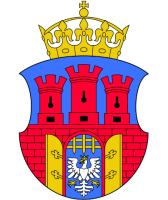The development potential of the Municipality of Krakow in terms of the ability to compete on the tourist market is confirmed by the results of image analyzes. Research presented by Pricewaterhouse Coopers (PwC) in the 2011 "Report on major Polish cities" indicates that "Krakow has an excellent image. It is the most recognizable Polish city in the world, mainly thanks to its rich historical and cultural traditions. It is largely due to this fact that Krakow also enjoys great business attractiveness ”. The indicator used by PwC in the area of "overall image" was estimated for Krakow at the highest level of 248.4 among the analyzed cities, with the average level of 100 for the 11 cities.
In addition, the data presented in the document "Marketing Strategy of Poland in the tourism sector for 2012-2020" indicate that Krakow is one of the most recognizable tourist destinations in Poland.
Target markets are all the basic and the so-called emerging and potential, i.e. geographically, incl. Georgia, Romania, Brazil, Argentina, China, India, South Korea, Philippines, Mexico, Kazakhstan and in socio-demographic terms: seniors, families with young children. Summing up, it should be emphasized that the commune of Krakow has a very large development potential for tourist products.
In addition, there are opportunities to modernize and share the spa advantages of the city in Swoszowice and around the Matecznego roundabout. The potential of this product is small. Its increase is possible provided that the conditions for the modernization of infrastructure and extension of the offer are met.
The weaknesses in the development of tourism in Krakow, resulting from the SWOT analysis, include:
- Kraków - Balice airport capacity limitations.
- Irregularities in the functioning of the internal communication system (especially the lack of parking lots, tourist stops for coaches) linking the city with other tourist centers and tourist origin.
- Delays in the implementation of strategic investments from the point of view of tourism development in the sense of "all senses".
- Poor tourist infrastructure and little use of the tourist potential of the districts located in the vicinity of the city center and peripheral to the city center.
- Poor use of green areas by tourists.
- Little qualified managerial staff in the field of specialist tourism services.
- Insufficient profiling of the offer, insufficient coordination and direction of promotional and information activities.
- Insufficient use of the city's cultural and historical heritage to build tourist products that meet the needs of modern tourists, including in creating "narratives", referring to emotions and experiences of participants, creating opportunities for the personal involvement of visitors (transition from "see" to "touch", "experience", "join in", "find").
- Lack of coordinated activities in the area of building the hospitality of the place.
- Insufficient use of technological opportunities to communicate with visitors and the industry.
- Lack of coordination of the dates of the organization of large events and the unused possibilities of organizing cultural events in the calendar year, especially outside the main tourist season.
- Too slow revitalization of potentially attractive areas of the city (eg Nowa Huta, Zabłocie, Kazimierz, Stare Podgórze).
- Spatial conflicts between tourism (especially entertainment in the historical district and in Kazimierz) and other forms of space use (especially the residential function).
- Possibility of exceeding the tourist capacity in the area of the Old Town in the tourist season.
- Spatial conflicts between pedestrian, bicycle and motorized traffic due to the lack of road infrastructure elements, such as parking spaces, bicycle paths, as well as the lack of a culture of space sharing.
- Uncontrolled activity in terms of the number and aesthetics of outdoor advertising in the city space.
- Poor accessibility of tourist attractions for people with disabilities.
- Insufficient ties and the scope of cooperation within the tourism and tourism-related industries.
- Existing crime in places where tourist traffic is concentrated.
- The problem of the occurring smog.

